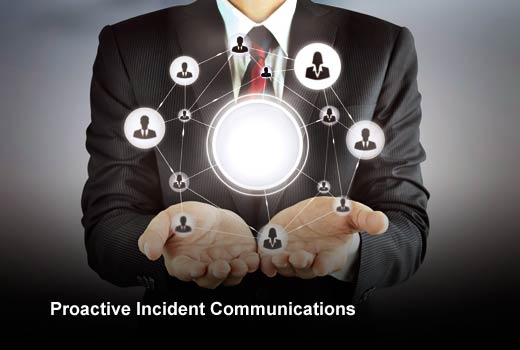Major IT incidents and business disruptions occur at every company. When they do, specialized procedures kick in to restore service as quickly as possible. The IT service desk initiates IT’s response by alerting major incident managers, who assemble a major incident resolution team and get to work.
But restoration and resolution are only the tip of the major incident communication iceberg. Really effective major incident communication reaches out to a host of other people inside and outside the organization to share information, receive help, keep people up to date and prevent further interruptions.
In this slideshow, Abbas Haider Ali, CTO, xMatters, Inc., outlines eight important people to connect with outside the resolution process.
Abbas Haider Ali brings over 15 years of experience in networking, cloud-based services and multi-modal communications. As CTO of xMatters, he’s responsible for evangelizing the adoption of communications-enabled business processes, and has worked closely with more than 400 global IT organizations to create a vision for adopting intelligent communication strategies across business scenarios.
Proactive Incident Communications
Click through for eight important people to connect with outside the resolution process, as identified by Abbas Haider Ali, CTO, xMatters, Inc.
Help Desk and Call Centers
Customer service representatives have to contend with increased call volumes from (mostly) angry customers who want answers. If your reps can’t give at least basic status information and customers start venting their frustrations on social media and the blogosphere, things could get ugly.
Executives
Executives do not like surprises, especially when they come from angry customers or the media. And no one likes surprise calls from an angry CEO. It’s a bad career move. Proactive communication can help executives to be better spokespeople for the company during disruptions, and keep them off your back at the same time.
Impacted Employees
A major IT incident can impact employees who are not part of the resolution process at all. Employees throughout the company could be without critical systems and unable to do their jobs. Have the common courtesy to let them know what’s happening, and they won’t have to call you either.
Business Continuity Management
Business continuity management doesn’t have to be involved for every event, but more companies are turning large and prolonged incidents over to BCM for rapid deployment of resources and overall incident management while IT restores service and resolves issues. A 2014 Ponemon Institute study shows that a major retailer decreased the cost of a data breach by $13 per compromised record by involving BCM.
Customers
Keep them informed of the status of their service outage, and they will reward you with both fewer interruptions and greater loyalty. According to SQM Group, every 1 percent improvement in first call resolution produces a 1 percent improvement in customer satisfaction. They also found that, on average, customer satisfaction drops by 15 percent every time a customer has to call back about the same issue.
Media
News reports and blogs scolding your company for radio silence during an outage can destroy your company’s reputation. According to a 2012 Ponemon Institute study, 54 percent of companies believe it can take more than 10 months to restore a company’s reputation following a breach of customer data. Transparent and timely communication can go a long way toward minimizing the effect.
Regulators
New laws and guidelines around the world have gotten tougher on companies that don’t report customer data breaches to the proper authorities. Failure to report the detection of a possible breach within 24 hours can lead to hefty fines, a tarnished reputation, and an uncomfortable place on regulators’ watch lists.
Third-Party Service Providers
When your service is down, your customers will blame you. If the real culprit is an Internet service provider, contact them. They might not know. If they do know, it could help your reputation if they fess up.











